Adding items to a fixed section
A fixed section in a test form contains specific items that will be delivered to all candidates. You can choose to deliver these items in the same order or randomise the order for each candidate.
This article explains how to add items to a fixed section.
In this article
1. Select Add
Select your section folder in the Test Form Rules tab.

Select Add to open the Section (Fixed) dialog where you can add items.

2. Search for items
You must run a search in the Section (Fixed) dialog to find the items you want to add to the section.
Select Create Parameter to search for items.

Choose a parameter type in the Select Type menu. For information about all search parameters, read About test form search parameters.

Choose the subjects you want to search in under Select Projects.
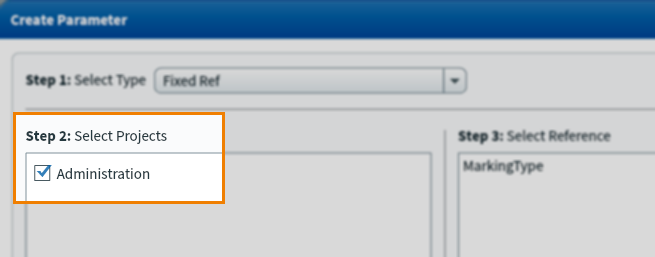
Select the relevant setting or enter a value in the following steps. These change based on the parameter type you choose.
The Available Items count shows you how many items are available based on your search parameter.

Select Create to run the search and return the available items.
You can search for more items or select Done to view the items returned from your search.
3. Refine search parameters
The Search Parameters table displays all currently active search parameters.
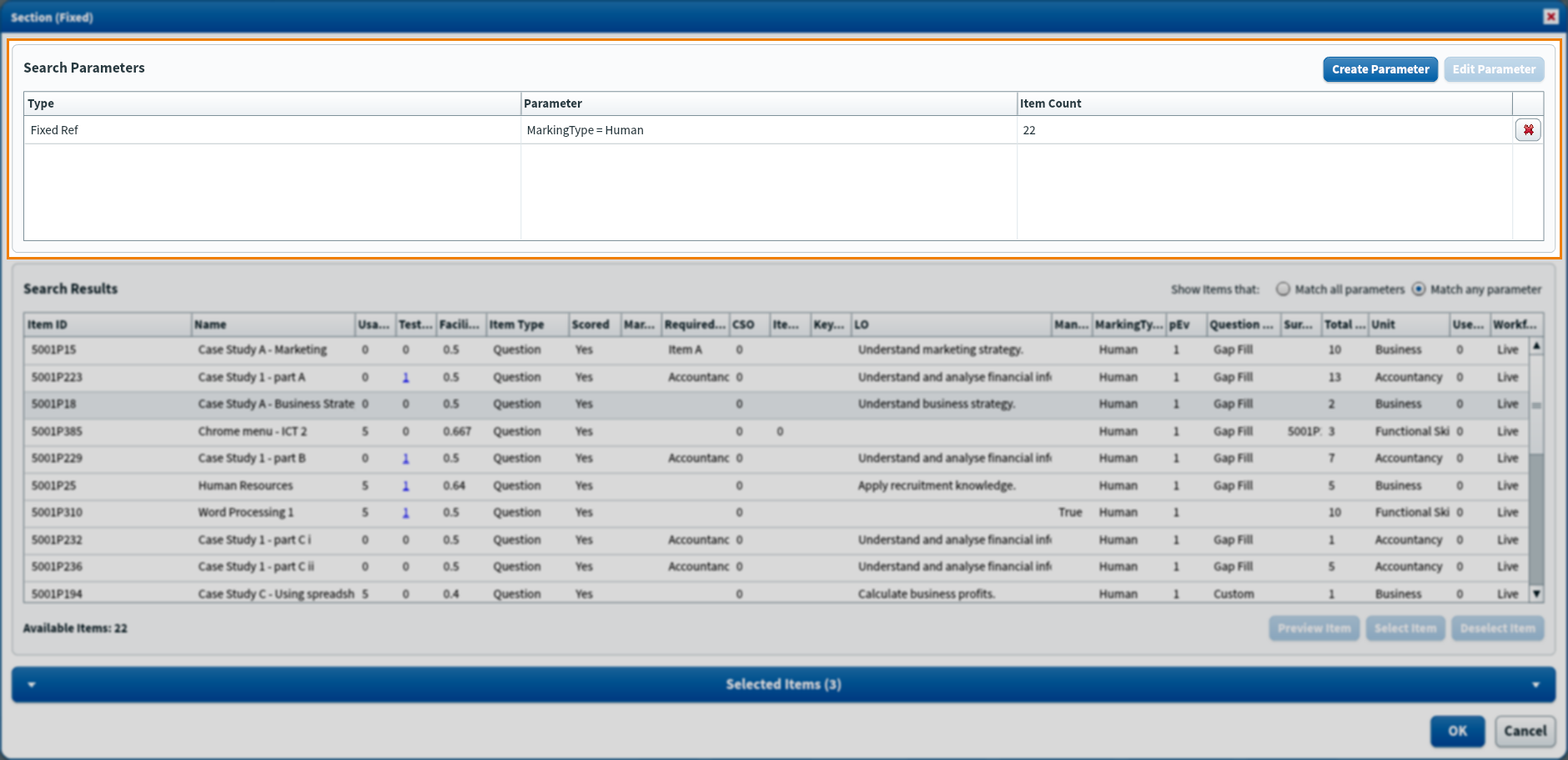
| Column | Description |
|---|---|
| Type | The type of search parameter. For more information about the different types, read About test form search parameters. |
| Parameter | The values used in the search parameter. |
| Item count | The number of available items returned by the search parameter. |
To change the details of a search parameter, select it in the table.

Select Edit Parameter to change the parameter settings in the Edit Parameter dialog.
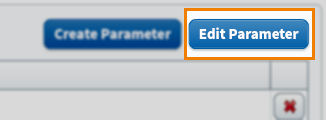
Select Delete to remove a search parameter.
4. Refine search results
The Search Results grid displays all the items that match your search parameters.
Select Match all parameters to show items that match all search parameters (AND logic). Select Match any parameter to show items that match at least one search parameter (OR logic).

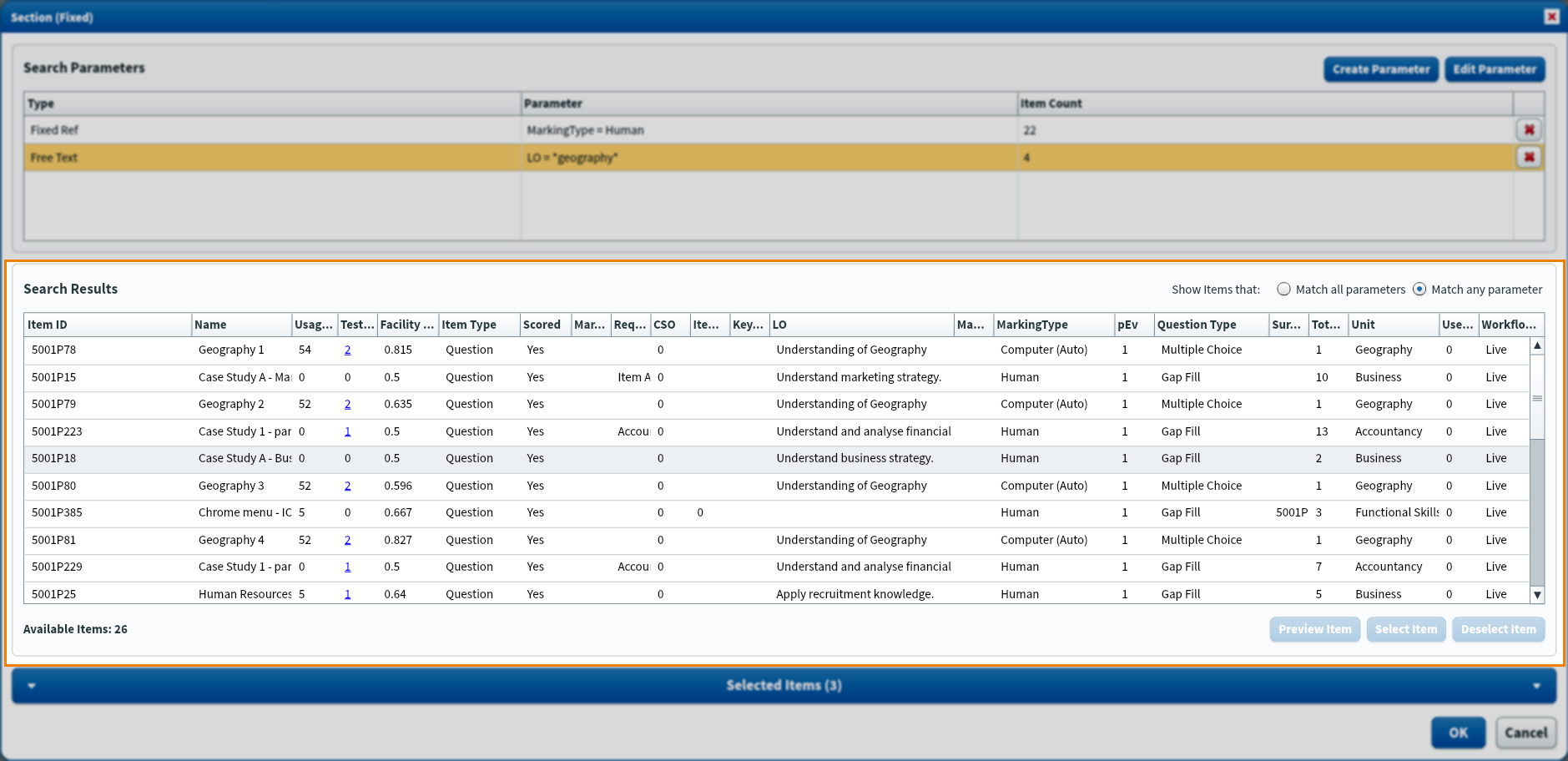
| Column | Description |
|---|---|
| Item ID | The unique ID assigned to the item. |
| Name | The name given to the item in Item Authoring. |
| Usage count | The total number of times the item has been delivered. |
| Test form count | The total number of test forms the item has been added to.
NOTE: This only accounts for items added to fixed sections.
|
| Facility value | The difficulty value between 0 and 1. Also known as the P value. |
| Item type | The type of item. This can be Question, Information, or Survey.
NOTE: Items from ContentProducer can also be Rubric or Source.
|
| Scored | Yes indicates the item is scored. No indicates the item is non-scored. |
| Marked metadata | The marked learning outcomes associated with the item. For more information, read ‘Setting up Marked Learning Outcomes’ in Using tags in items. |
| Required tools | The tools associated with the item. This includes source material and images that open as a pop-up. You must add the listed tools to the test form before it can validate. For more information, read Adding tools to a test form. |
| Keywords | The Keyword tag values associated with the item. |
| LO | The Learning Outcome tag values associated with the item. |
| Marking type | The marking type of the item. This can be Computer (Auto) or Human.
NOTE: Items from ContentProducer can also use Smart Mark.
|
| Question type | The type of question. |
| Total marks | The total number of marks assigned to the item. |
| Unit | The Unit tag values associated with the item. |
5. Select items
Select an item in the grid or press Control or Shift to choose multiple items. Use Select item to add the items to the test form.

To remove items from the test form, select them in the grid and use Deselect item.

To see a preview of the item in delivery, select it in the grid and use Preview item.

6. Review selected items
Press Selected items to view all items added to the section using the current search parameters.
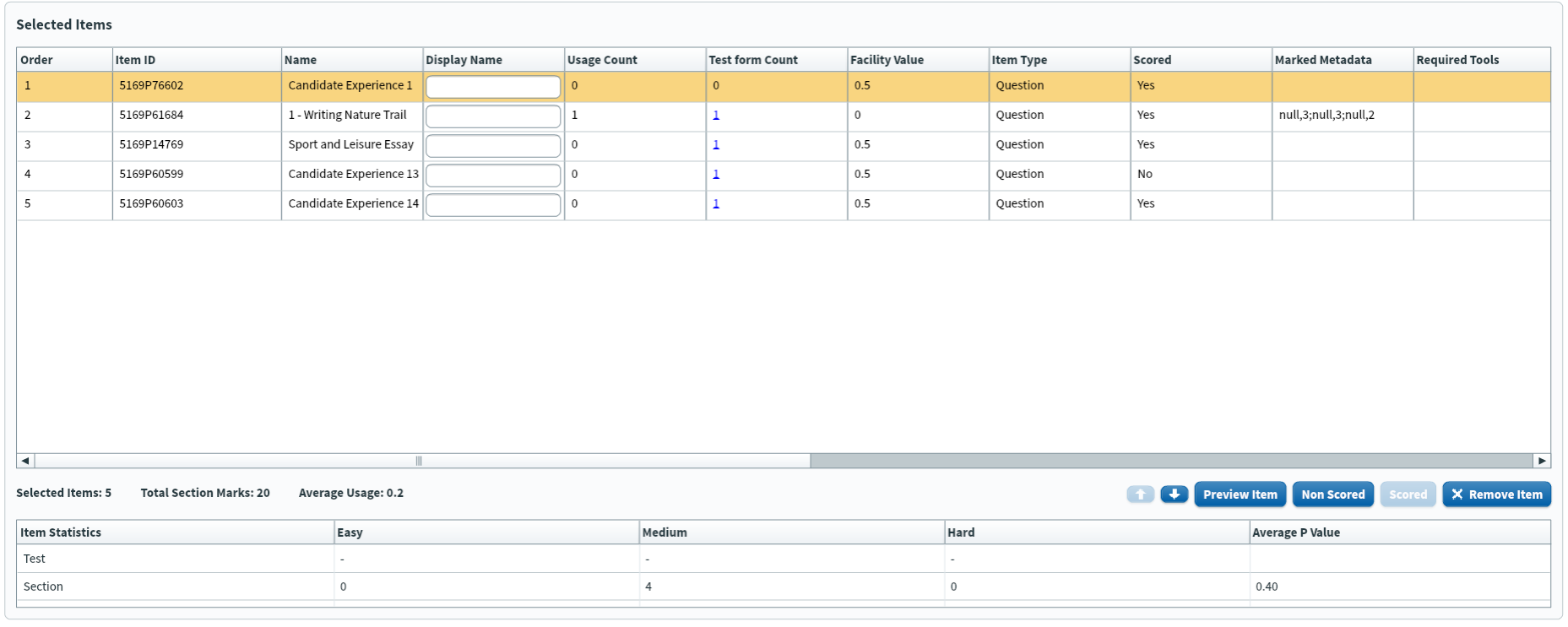
| Column | Description |
|---|---|
| Order | Indicates the position of the item in the section. |
| Item ID | The item’s unique identifier. |
| Name | The item’s name. |
| Display name | An alternative name for the item. This displays next to the item ID on the Test Form Rules tab and to users on the Paper Mark screen. |
| Usage count | The total number of times the item has been delivered. |
| Test form count | The total number of test forms the item has been added to.
NOTE: This only accounts for items added to fixed sections.
|
| Facility value | The difficulty value between 0 and 1. Also known as the P value. |
| Item type | The type of item. This can be Question, Information, or Survey.
NOTE: Items from ContentProducer can also be Rubric or Source.
|
| Scored | Yes indicates the item is scored. No indicates the item is non-scored. |
| Marked metadata | The marked learning outcomes associated with the item. For more information, read ‘Setting up Marked Learning Outcomes’ in Using tags in items. |
| Required tools | The tools associated with the item. This includes source material and images that open as a pop-up. You must add the listed tools to the test form before it can validate. For more information, read the Adding tools to a test form article. |
| Keywords | The Keyword tag values associated with the item. |
| LO | The Learning Outcome tag values associated with the item. |
| Marking type | The marking type of the item. This can be Computer (Auto) or Human.
NOTE: Items from ContentProducer can also use Smart Mark.
|
| Question type | The type of question. |
| Total marks | The total number of marks associated with the item. |
| Unit | The Unit tag values associated with the item. |
You can also see the following information summarising the items in the grid.
| Information | Description |
|---|---|
| Selected items | The total number of items in the section. |
| Total section marks | The total number of marks for all items. |
| Average usage | The average number of times the items have been delivered to candidates. |
P value data
You can see P value data for all items in the section and compare this with the overall test form.
7. Edit selected items
You can select an item in the grid and use the following buttons to make changes.

| Button | Description |
|---|---|
| Up | Moves the item up one position. |
| Down | Moves the item down one position. |
| Preview item | Displays a preview of the item in the test driver. |
| Non scored | Removes marks from a scored item for this test form. This does not affect the marks added to the item in Item Authoring. |
| Scored | Add marks to a non-scored item for this test form. This does not affect the marks added to the item in Item Authoring. |
| Remove item | Removes the item from the section. |
8. Save selected items
Select OK to save your changes and return to the Test Form Rules tab.
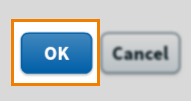
Further reading
For more information about editing test form content, read the following articles:
